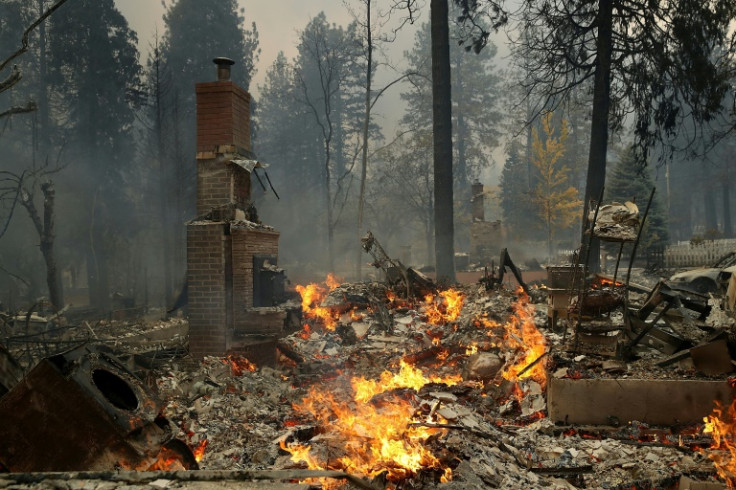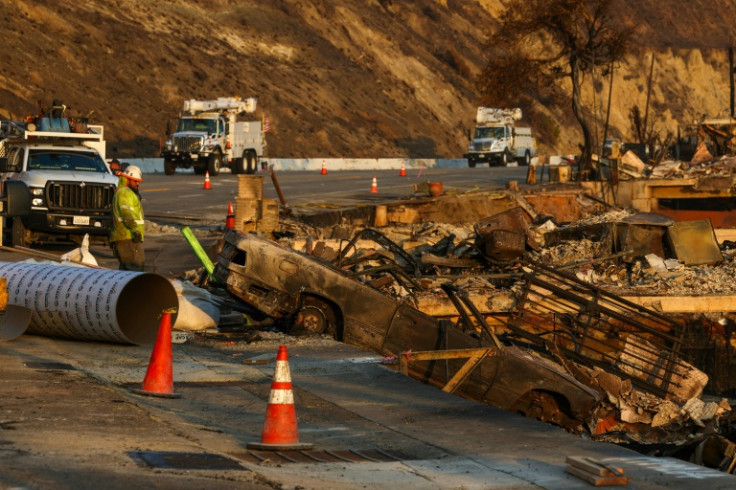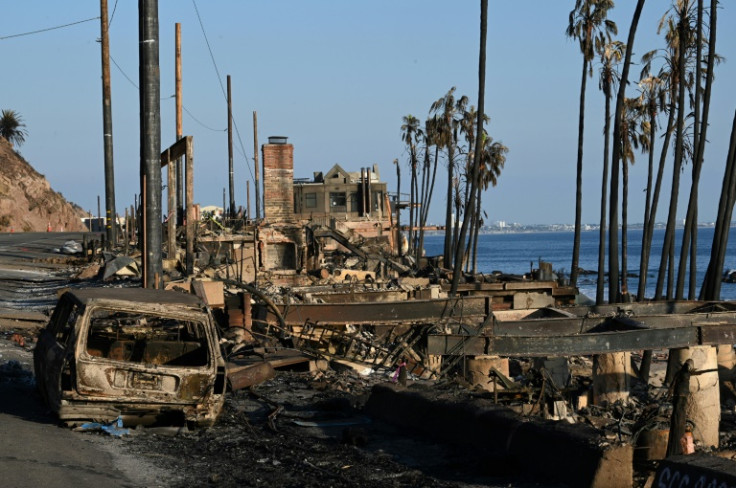In Fire-ravaged Los Angeles, A Long Road Of Rebuilding

After the loss of more than 10,000 homes in last month's Los Angeles fires, the region faces a daunting challenge to rebuild with a tight labor market, constrained construction supplies and strict regulations.
"It's going to be a very difficult rebuild process ... and it's going to take a long time," said Jim Tobin, CEO of the National Association of Home Builders. "Fire is very unique: we're talking about total loss."
Even when there is still a foundation or a chimney, "fire wreaks havoc with those materials and they all have to be knocked down," said Tobin, describing what is often a more complete annihilation compared with a flood or hurricane.
Before new work can begin, the old properties must be cleared of debris because of the risk of toxic waste, said Mary Comerio, professor of architecture at the University of California at Berkeley and a specialist in disaster recovery.
In Paradise, California -- where 18,000 structures were obliterated in fires in 2018, including 11,000 homes -- this initial step of clearing out the old property took nine months, according to Colette Curtis, who directed the rebuilding for the city.
Only 10 percent of Paradise's homes and some 500 buildings overall survived the conflagration. The initial rebuilding permits were granted in 2019. There are about 400 buildings currently under construction in the city.
"We expect our recovery will be another 10 years probably before we're completely rebuilt," Curtis said.
Things could move faster in wealthy areas such as Malibu and Pacific Palisades, devastated in last month's fires, if the homeowners don't need to wait for funds from an insurer, or if they receive federal aid.
Experts say construction permits for new homes could require nine to 12 months, with a finished home ready in three to five years.
Public entities will also need to mobilize to clean and rebuild roadways, and build waist disposal and energy facilities, schools, hospitals and libraries.
The federal government normally shoulders three-quarters of the costs, but then-president Joe Biden said it would cover 100 percent of the cost of the most recent Los Angeles fires.
It is unclear whether President Donald Trump -- who succeeded Biden on January 20 -- will adhere to that promise, however.
Republican Trump has repeatedly threatened to withhold funding from Democrat-led California -- though after seeing the fire damage for himself last month, he vowed solidarity.
California Governor Gavin Newsom has announced steps meant to accelerate the rebuilding, loosening some environmental standards and cracking down on price gouging.
Supplies have remained tight for some construction materials. Procuring more could be further challenged if the Trump administration moves ahead with planned tariffs on China and Canada, which are major suppliers of key building materials.
The construction industry is also expected to need to add some 439,000 workers in 2025 and 500,000 the year after.
"For any major urban disaster, there will be a lot of internal migration of workers," said Comerio.
The surge of activity is "quite good for the economy," she said. "All the construction is a very good short-term boom."
But the burst of demand can put stress on US home improvement stores such as Home Depot and Lowe's.
"It will be difficult for most retailers and suppliers to cope with the very elevated demand that is generated in a short period of time," said Neil Saunders of GlobalData. "Tariffs, if applied, will add another layer of complication."
The new construction will also need to mitigate against future fire risk.
At Paradise, where 85 people perished in the fires, local officials are strict about ensuring that walls, roofs and windows are fire resistant, that there is a five-foot zone of non-combustible vegetation near a home and that electric lines are buried, Curtis said.
"Don't give up hope," she said. "It feels impossible right now but just keep going, it will get better."



© Copyright AFP 2024. All rights reserved.





















